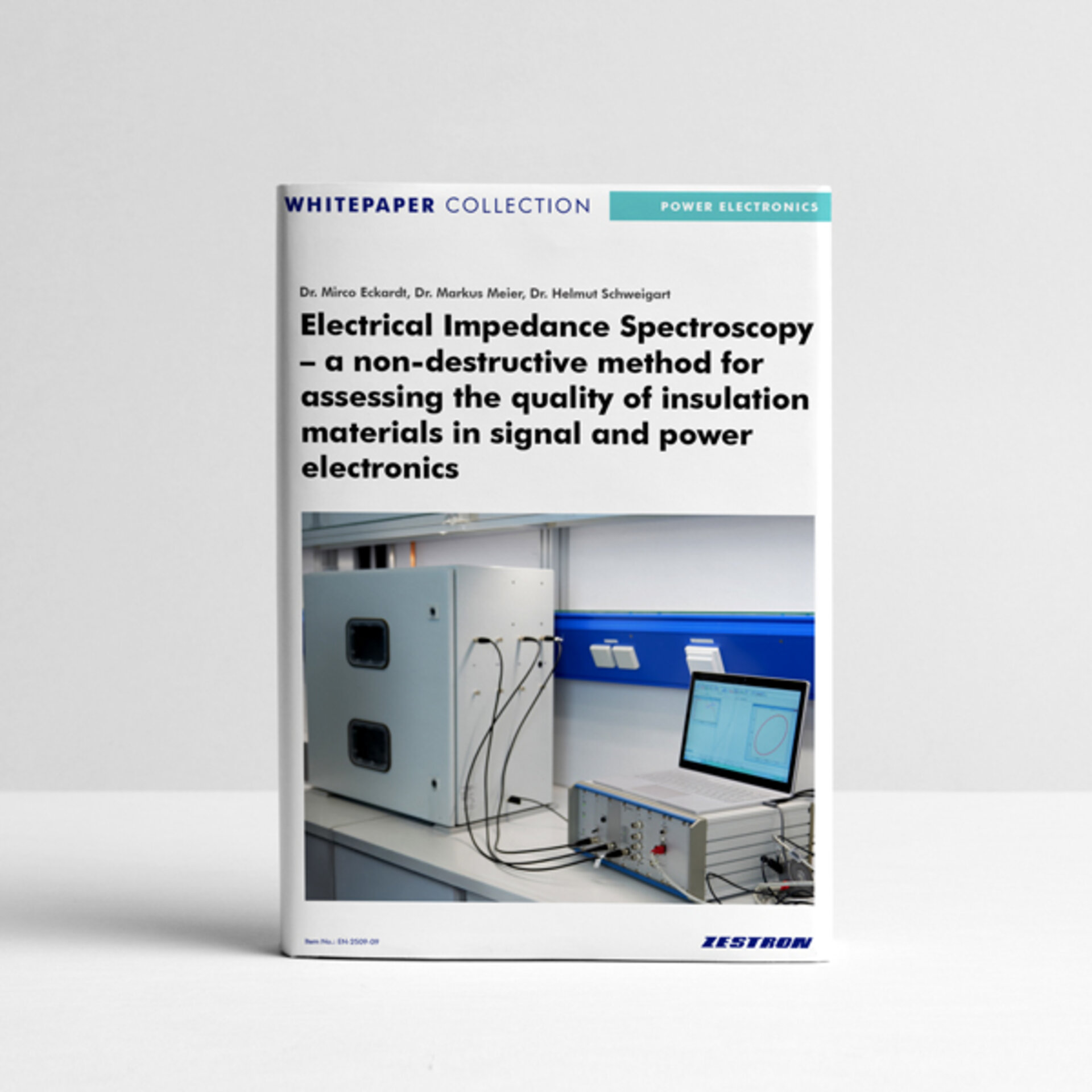
Electrical Impedance Spectroscopy – a non-destructive method for assessing the quality of insulation materials in signal and power electronics
Dr. Helmut Schweigart, Dr. Mirco Eckardt, Dr. Markus Meier
» free «
Brief Insight
The reliability of power modules is a key quality factor in applications such as automotive and energy technology. To ensure their performance under stress conditions like temperature fluctuations, corrosive gases, and humidity, they are encapsulated using polymer-based materials such as Epoxy Mold Compounds (EMC).
To evaluate the quality and long-term stability of these protective systems, electrical impedance spectroscopy (EIS) has proven to be a powerful, non-destructive analysis method. Combined with highly accelerated stress tests (HAST), it enables the early detection of potential weaknesses — within just a few hours or days.
Delivery form: PDF
Article number: EN-2509-09
White paper
Electrical Impedance Spectroscopy – a non-destructive method for assessing the quality of insulation materials in signal and power electronics
Abtract
The reliability of power modules is increasingly becoming a key quality criterion in numerous critical applications, such as in automotive and energy technology. As an insulation system, but also to ensure the function of such modules under harsh conditions such as temperature changes, harmful gases and humidity, they are coated, moulded or encapsulated using mostly polymer-based material systems. "Epoxy mould compounds" (EMC) are being used more and more frequently.
In order to guarantee the quality and long-term stability of the EMCs, among other things, the electrical properties of these polymer-based protection and insulation systems must be characterised in specific stress scenarios. Electrical impedance spectroscopy (EIS) has emerged as a promising and non-destructive method for this task. Particularly in time-critical development steps, the combination of EIS with "highly accelerated stress tests" (HAST) is a powerful method for the early identification of potential weak points within hours to a few days.
Key Topics
-
Insulation und protectice materials
-
Electrical impedance spectrosopy (EIS) basics
-
Determination of moisture robustness by combining EIS and stress tests
Category: Power Electronics | Request: Bookmark this

Dr. Helmut Schweigart
Head of Reliability & Surfaces
Dr. Helmut Schweigart obtained his doctorate for research into the reliability of electronic sub-assemblies, and he has been employed at ZESTRON Europe since the early days of the company. He is now Head of Reliability & Surfaces Team. He is also a member of the Board of Management at GfKORR (Gesellschaft für Korrosionsschutz - a company specialising in corrosion inhibitors) as well as an active member of GUS (Gesellschaft für Umweltsimulation - an environmental simulation company) and of the IPC. He has already published numerous technical articles.

Dr. Mirco Eckardt
Technology Analyst
Dr. Mirco Eckardt did his thesis in chemistry and his master studies in chemistry at the university of Bayreuth. As part of our ZESTRON Reliability & Surfaces Team he is responsible for the examination of Technology Coachings within the fields risk assessment and failure analysis as well as for conducting research projects.

Dr. Markus Meier
Group Leader Reliability & Surfaces
After his study of chemistry at the Technical University Munich, Markus Meier worked among others on the ageing of cement and earned a PhD on the topic crystallization of cement-hydrate-phases under microgravity conditions. He is experienced in the areas interfacial chemistry and surface analytics. He is part of the Reliability & Surfaces Team in which he is responsible for the coordination of research projects as well as the organization of technology coachings.

